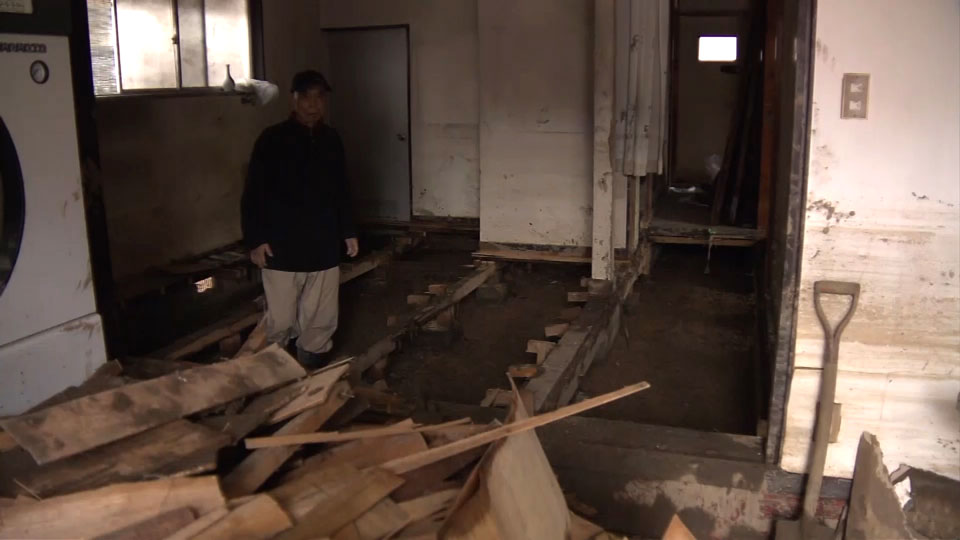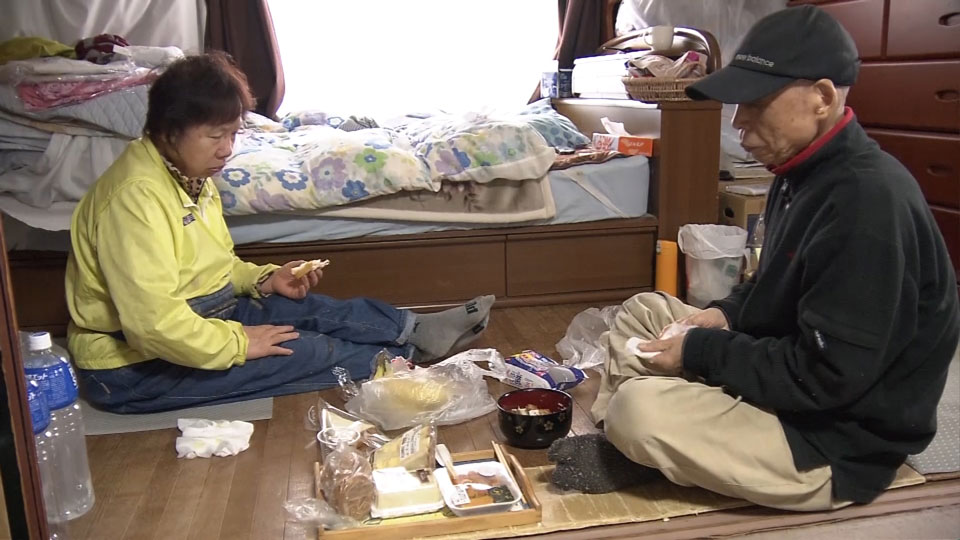79-year-old Eiichi Hirano runs a dry cleaning business in Sano City, Tochigi Prefecture. He says when Hagibis struck, he and his wife, Midori, decided to move to the second floor of their home. This proved a wise choice. Eiichi says that after a levee broke on the nearby Akiyama River, the first floor was quickly submerged.
The couple now live entirely on the second floor, where there is only a bedroom. The kitchen is downstairs, so they can no longer cook. Their car was inundated and is now useless. So far, they have managed to get by with the help of Midori's sister who lives nearby and brings food every day.

Other people in the area have moved to shelters but Eiichi is unable to do so because of a chronic leg condition. At the welfare and community centers that serve as shelters, evacuees have no choice but to sit or sleep on floors. Eiichi says this would be impossible for him.
Ever since the storm, Eiichi has had a fever and Midori has been unable to sleep. They are worried; they may be forced to close the business they've run for more than 50 years.
"I see absolutely no prospects for my future," Eiichi says.

The typhoon caused flooding damage to over 2,600 houses in Sano. Many residents, mostly senior citizens, are still trapped in their inundated homes. Some have started to worry about their long-term health.
73-year-old Kazuo Ishikawa and his wife, Yoko, live in a one-story house that was completely flooded during the storm. The couple managed to remove enough mud to make adequate sleeping space. But there is still mud beneath the floor, which chills the house at night. They also say the poor conditions have led to foul smells.
Sano City officials say a number of survivors have been injured during cleanup operations, and that some have suffered emotional trauma. They also say that when the mud does dry up, there is a danger that dust leads to poor air quality. For now, there seems to be no end of the everyday nightmare in sight for these residents.

